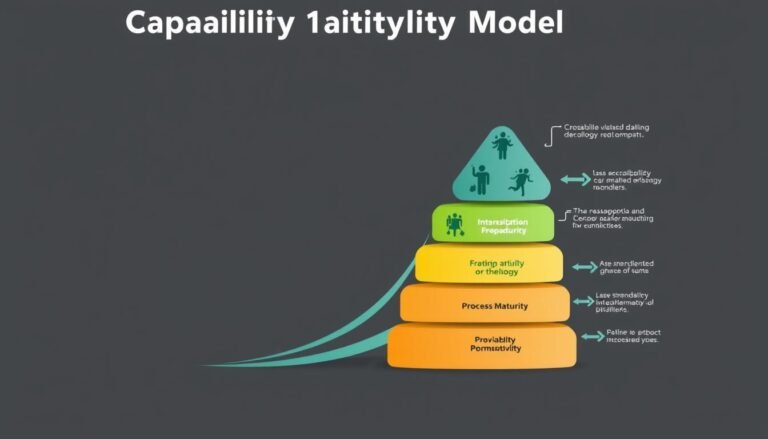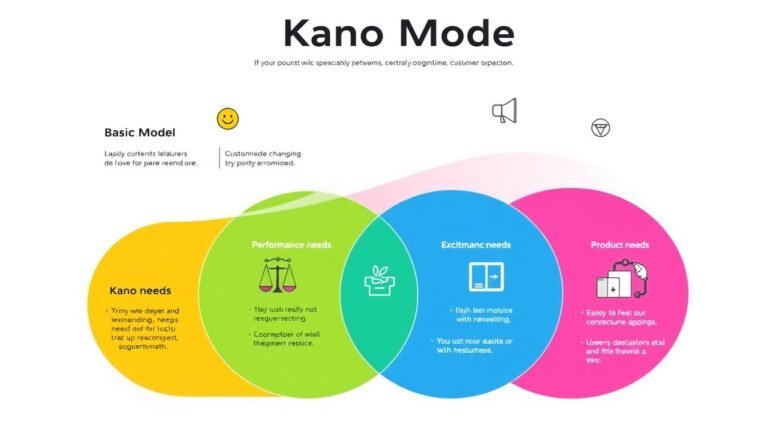Unlock Change with Force Field Analysis Tips
Ever wondered why some changes work out while others don’t? It might be because of forces inside your organization. Force Field Analysis, created by Kurt Lewin in the 1940s, can help you understand these forces. This method shows what pushes for change and what holds it back. It’s key for making changes work well.
Today, knowing how to use Force Field Analysis is crucial. It helps you tackle big changes successfully.
Key Takeaways
- Force Field Analysis helps visualize the dynamics of change, highlighting driving and restraining forces.
- Understanding both internal and external driving forces is key to successful change initiatives.
- Organizational culture and resource limitations are common restraining forces to address.
- Strategies to strengthen driving forces and mitigate restraining forces are crucial for implementation.
- The approach ensures informed decision-making and enhances stakeholder engagement in change processes.
- Applications of Force Field Analysis span across organizational change management and personal development.
Introduction to Change Management
Change management is a way to help people, teams, and companies move from one state to another. It was first created in the 1940s by Kurt Lewin, a German-American psychologist. This method gives us tools to understand how change works in different places, like work and society.
It’s about planning and doing things well. We look at what pushes change forward and what holds it back. This helps us manage change better.
Being good at change management means planning carefully. We figure out what makes change happen, like new technology or changes in what people think. We also see what might stop change, like old habits or poor communication. By balancing these, we can make our companies ready and ahead of changes, which helps everyone grow.
A good change management plan helps employees be flexible and encourages new ideas. It shows how important it is to support employees during big changes. By giving them the right tools and training, we help them deal with any resistance. This way, our companies can keep growing and reaching new goals.
Understanding the Basics of Force Field Analysis
Force Field Analysis is a key tool for making decisions in change management. Kurt Lewin created it in 1951. It helps understand the forces that affect change in organizations. Knowing about these forces helps organizations manage change better.
Definition and Origin of Force Field Analysis
Lewin’s research led to the creation of Force Field Analysis. It divides forces into two types. Driving forces push for change, while restraining forces hold back. This model helps organizations see what changes are possible and plan their strategies.
Importance of Change Management in Organizations
Change management is crucial for success in today’s competitive world. Force Field Analysis plays a big role by identifying forces for and against change. By working together, teams can create a strong plan to overcome obstacles.
This approach helps reduce barriers to change, improve communication, and lessen resistance. Using the Lewin model can make change smoother and more successful.
Identifying Driving Forces for Change
Knowing what drives change in organizations is key to managing it well. These forces push companies towards new goals and better ways of doing things. By understanding these forces, businesses can find the best ways to grow and improve.
What Constitutes Driving Forces?
Driving forces come from both inside and outside a company. Inside, they can be things like motivated employees and plans from management to work better. Outside, they include market trends, what customers want, and the need to keep up with competitors. With strong leadership, companies can use these forces to lead their teams to success.
Examples of Internal and External Driving Forces
There are many driving forces that affect change in organizations:
- Internal Driving Forces:
- Management efforts to boost productivity.
- Working to make the workplace better for employees.
- Trying new things to update old tech or methods.
- External Driving Forces:
- Changes in what customers want.
- New rules that need following.
- New tech that needs to be used.
By looking closely at these forces, companies can improve how they handle change. This helps them do better in their efforts to grow and develop.
Identifying Restraining Forces Against Change
In change management, restraining forces are key obstacles that slow down an organization’s change efforts. They come in many forms, like organizational and psychological barriers. It’s crucial to know about these forces because they can stop even the best plans. It’s important for organizations to quickly spot and tackle these issues.
What Are Restraining Forces?
Restraining forces are the hurdles that stand in the way of change in organizations. They include things like old policies, not having enough resources, and resistance from within the organization. On the personal side, people might fear losing their jobs, dislike changing their habits, or be unsure about new ways of doing things. Knowing about these can help organizations tackle their challenges better.
Common Organizational and Psychological Barriers
Organizations often face barriers like leaders not fully supporting change, poor communication, and not enough training for staff. Psychological barriers come from deep-seated attitudes and a hesitation to try new things. To overcome these, organizations can try talking more, getting employees involved, and offering good training. By tackling these issues, organizations can make it easier for change to happen.
Source Links
- Implement Change Successfully with Force Field Analysis!
- A Comprehensive Guide to Force Field Analysis – DataMyte
- Force Field Analysis: The Ultimate How-to Guide
- Understanding Force Field Analysis
- Lewin’s Force Field Analysis Explained
- Introduction to Force Field Analysis | Lucidity
- Step-by-Step Guide to Understanding and Using Force Field Analysis
- Force Field Analysis | A Comprehensive Guide with Templates
- How to Use Force Field Analysis | Example | Certainty
- How to Conduct a Force Field Analysis (Free Tool & Template)
- Lewin’s Force Field Analysis in Change Management. What, Why, and How – SixSigma.us
- Understanding Force Field Analysis | SafetyCulture
- Force field analysis of driving and restraining factors affecting the evidence-based decision-making in health systems; comparing two approaches







